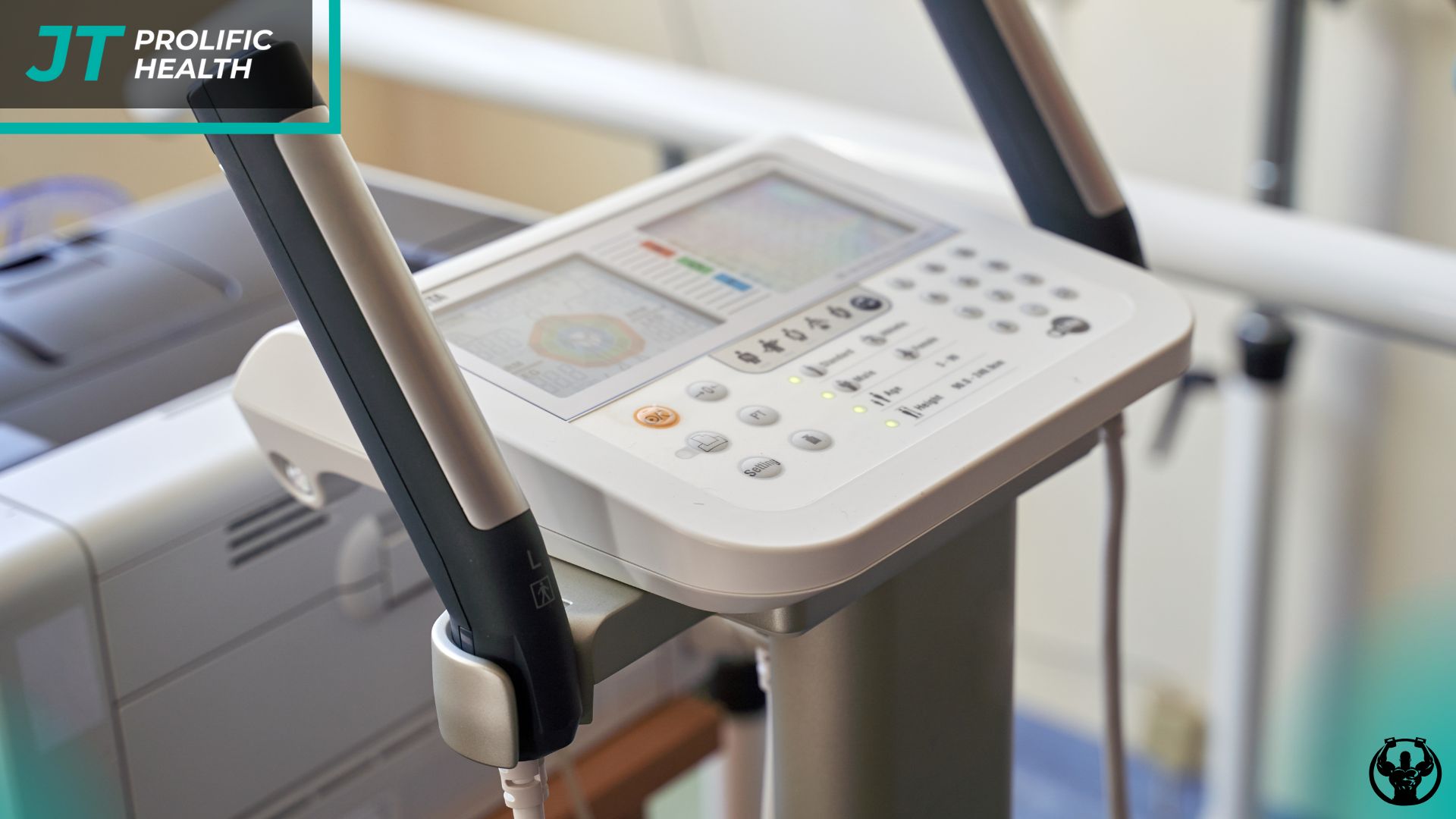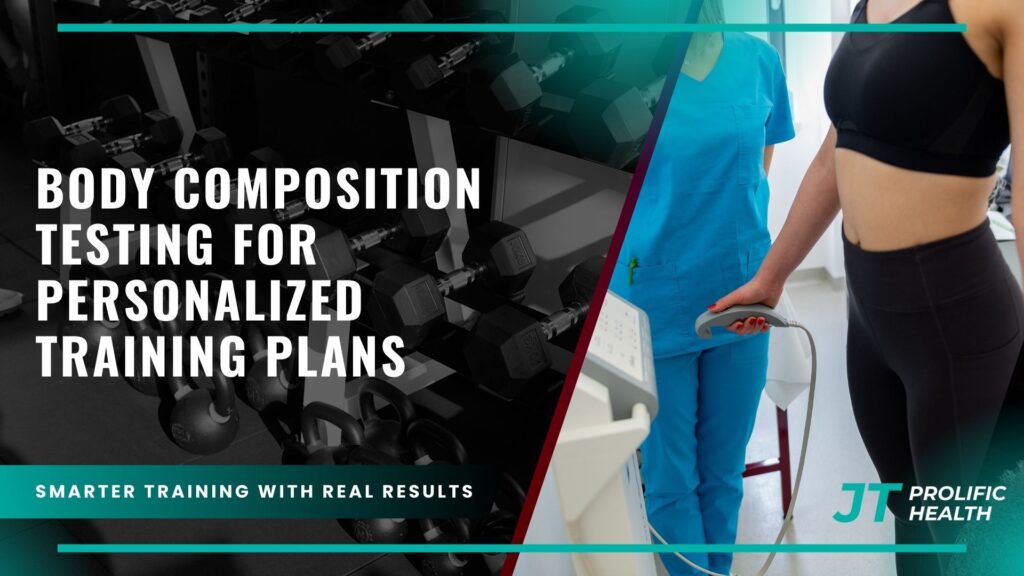Understanding your body’s composition goes far beyond what the scale reveals. While traditional weight measurements provide a single data point, body composition testing offers a comprehensive analysis of muscle mass, body fat percentage, bone density, and water distribution throughout your body. This detailed information serves as the foundation for creating personalized training programs that deliver measurable results and help you achieve your specific fitness goals.
Body composition testing has revolutionized how fitness professionals approach program design. Rather than relying on generic workout templates or one-size-fits-all approaches, trainers can now develop evidence-based strategies tailored to each individual’s unique physiological profile. This scientific approach eliminates guesswork and provides clear benchmarks for tracking progress over time.
The relationship between body composition data and training effectiveness cannot be overstated. When you understand your starting point—including muscle mass distribution, metabolic rate, and body fat percentage—you can make informed decisions about exercise selection, training intensity, and nutritional strategies. This knowledge empowers both trainers and clients to set realistic expectations and create sustainable pathways toward long-term health and fitness success.
Modern body composition testing methods utilize advanced technology to provide insights that were previously unavailable outside of research laboratories. These sophisticated measurements reveal not just how much muscle and fat you have, but where it’s distributed throughout your body. This information proves invaluable for identifying muscle imbalances, assessing injury risk, and determining the most effective training modalities for your specific needs.
The impact of accurate body composition data extends beyond immediate training decisions. It influences recovery protocols, nutritional timing, supplementation strategies, and even sleep optimization. By understanding your body’s unique characteristics, you can make lifestyle adjustments that support your training goals and enhance overall well-being. This holistic approach to fitness ensures that every aspect of your health journey works synergistically toward your desired outcomes.
Key Takeaways
- Precision Over Guesswork: Body composition testing eliminates the uncertainty that often accompanies traditional fitness assessments, providing specific data about muscle mass, body fat percentage, and metabolic markers that directly inform training decisions.
- Individualized Program Design: Detailed composition data enables trainers to create highly personalized workout plans that address specific imbalances, leverage natural strengths, and target areas requiring improvement based on objective measurements rather than assumptions.
- Progress Tracking Excellence: Regular body composition assessments provide quantifiable metrics for evaluating training effectiveness, allowing for real-time program adjustments and maintaining motivation through visible progress documentation.
- Injury Prevention Insights: Composition analysis reveals muscle imbalances and asymmetries that may predispose individuals to injury, enabling proactive corrective exercise implementation before problems develop into serious issues.
- Metabolic Understanding: Body composition data helps determine individual metabolic rates and energy expenditure patterns, informing both training intensity recommendations and nutritional strategies for optimal results.
- Goal-Specific Strategies: Whether pursuing muscle gain, fat loss, athletic performance, or general health improvement, composition testing provides the baseline data necessary for developing targeted approaches that align with specific objectives.
- Long-term Health Monitoring: Regular composition assessments track changes in bone density, visceral fat levels, and muscle mass over time, providing valuable insights into overall health trends and aging processes.
Understanding Body Composition Testing Methods

Body composition testing encompasses various methodologies, each offering unique advantages and levels of precision. The most common and accessible method is bioelectrical impedance analysis (BIA), which sends a small electrical current through the body to measure resistance and estimate tissue composition. While convenient and cost-effective, BIA results can be influenced by hydration levels, recent exercise, and food intake, making consistent testing conditions essential for accurate comparisons.
Dual-energy X-ray absorptiometry (DEXA) represents the gold standard for body composition analysis in clinical and research settings. This advanced imaging technique provides detailed information about bone density, lean tissue mass, and fat distribution with exceptional accuracy. DEXA scans can identify regional differences in composition, revealing valuable insights about muscle development patterns and potential health risks associated with specific fat distribution patterns.
Hydrostatic weighing, also known as underwater weighing, calculates body density by comparing weight measurements in air versus underwater. This method relies on the principle that muscle tissue is denser than fat tissue, allowing for accurate body fat percentage calculations. While highly accurate, hydrostatic weighing requires specialized equipment and can be uncomfortable for individuals who are not comfortable being submerged underwater.
Air displacement plethysmography, commonly known by the brand name Bod Pod, uses air displacement principles to measure body volume and calculate composition. This method offers similar accuracy to hydrostatic weighing while being more comfortable and accessible for most individuals. The technology measures how much air the body displaces within a sealed chamber, providing reliable data for body fat and lean mass calculations.
Understanding the strengths and limitations of each testing method helps individuals and trainers select the most appropriate option for their specific needs and circumstances. Factors such as accuracy requirements, budget constraints, availability, and personal comfort levels all influence the choice of testing methodology. For comprehensive insights into various assessment approaches, our detailed fitness evaluation process provides valuable information about selecting the right testing protocol for your goals.
Interpreting Body Composition Data for Training Decisions


Raw body composition data becomes actionable intelligence when properly interpreted within the context of individual goals, fitness history, and current health status. Body fat percentage serves as a primary indicator, but understanding healthy ranges varies significantly based on age, gender, and athletic aspirations. For general health, men typically target 10-20% body fat, while women aim for 16-25%, though these ranges shift for competitive athletes or specific aesthetic goals.
Muscle mass distribution reveals critical information about training priorities and potential imbalances that require attention. Upper body to lower body muscle ratios help identify whether additional focus should be placed on specific muscle groups. Similarly, left-to-right symmetry measurements can highlight compensatory patterns or previous injury effects that influence exercise selection and progression strategies.
Visceral fat levels provide insights into metabolic health and disease risk factors that extend beyond aesthetic considerations. Elevated visceral fat levels may indicate the need for increased cardiovascular training, dietary modifications, and stress management strategies. This information helps prioritize training components that address both fitness goals and long-term health outcomes.
Bone density measurements, particularly valuable for older adults and post-menopausal women, inform decisions about weight-bearing exercise inclusion and impact training considerations. Low bone density readings may necessitate progressive resistance training protocols specifically designed to stimulate bone formation while minimizing injury risk through careful load management and movement selection.
Metabolic rate calculations derived from lean body mass measurements help establish appropriate caloric targets and training intensity zones. Individuals with higher muscle mass typically have elevated metabolic rates, allowing for more aggressive training protocols and higher caloric intakes. Conversely, those with lower muscle mass may require more conservative approaches focused on gradual capacity building.
Water distribution patterns can reveal hydration status, inflammation levels, and recovery capacity. Abnormal fluid retention patterns may indicate overtraining, inadequate recovery, or underlying health issues that require attention before intensifying training protocols. This information proves particularly valuable for athletes and individuals engaged in high-intensity training programs.
For those seeking expert guidance in interpreting their body composition results and developing appropriate training strategies, working with experienced professionals who understand how to translate data into actionable plans proves invaluable. Learn more about selecting qualified fitness professionals who can effectively utilize composition data in program design.
Designing Training Programs Based on Composition Results


Body composition data transforms generic workout templates into precision-engineered training systems tailored to individual physiological profiles. When muscle mass measurements reveal significant imbalances between upper and lower body, program design must prioritize corrective exercises and targeted development strategies. For instance, individuals with disproportionately low lower body muscle mass benefit from increased training frequency and volume for legs and glutes, while maintaining upper body strength.
Fat distribution patterns influence exercise selection and training modalities in profound ways. Those with higher levels of abdominal fat typically respond well to high-intensity interval training (HIIT) and compound movements that engage multiple muscle groups simultaneously. The metabolic demands of these exercises promote fat oxidation while building functional strength across movement patterns that translate to daily activities.
Metabolic rate calculations derived from lean body mass guide training intensity and recovery protocols. Individuals with higher muscle mass and elevated metabolic rates can typically handle more frequent training sessions and higher volumes without experiencing overtraining symptoms. Conversely, those with lower muscle mass may require longer recovery periods and more conservative progression strategies to avoid burnout and injury.
Bone density measurements inform decisions about impact training and resistance exercise protocols. Individuals with optimal bone density can safely engage in plyometric exercises, jumping movements, and high-impact activities that further stimulate bone formation. Those with lower bone density require progressive loading strategies that gradually increase mechanical stress while minimizing injury risk through careful movement selection and load management.
Age-related composition changes necessitate specific program modifications that address natural physiological shifts. Older adults experiencing muscle mass decline benefit from increased protein intake recommendations and resistance training frequencies that combat sarcopenia. Similarly, hormonal changes affecting fat distribution patterns may require adjusted cardiovascular training protocols and stress management strategies.
The integration of composition data with functional movement assessments creates comprehensive program designs that address both quantitative measurements and qualitative movement patterns. This holistic approach ensures that training programs not only improve body composition metrics but also enhance movement quality, reduce injury risk, and support long-term adherence to healthy lifestyle practices.
For individuals interested in specialized training approaches that maximize body composition improvements, exploring various methodologies can provide additional options. Consider learning about bodyweight training methods that effectively build lean muscle mass while improving functional movement patterns.
Monitoring Progress Through Regular Testing
Establishing a consistent body composition testing schedule provides the objective feedback necessary for evaluating training program effectiveness and making informed adjustments. Most experts recommend testing every 6-8 weeks, allowing sufficient time for measurable changes to occur while maintaining regular monitoring intervals. This frequency prevents the frustration of expecting dramatic changes too quickly while ensuring that ineffective strategies are identified and modified promptly.
Pre-testing protocols significantly impact result accuracy and consistency. Maintaining standardized conditions for each assessment ensures that changes reflect actual physiological adaptations rather than measurement variations. These protocols include testing at the same time of day, maintaining consistent hydration status, avoiding exercise for 24 hours prior to testing, and following similar dietary patterns before each assessment.
Data tracking systems help identify trends and patterns that might not be apparent from individual test results. Comprehensive records should include not only composition measurements but also training variables, nutritional changes, stress levels, sleep quality, and other lifestyle factors that influence body composition. This holistic approach to data collection enables more accurate interpretation of results and identification of contributing factors to positive or negative changes.
Plateau identification through regular testing allows for proactive program modifications before frustration and motivation decline occur. When composition changes stagnate despite consistent training adherence, the data provides objective evidence for implementing new strategies such as periodization adjustments, exercise variation, or nutritional modifications. This evidence-based approach prevents the common mistake of continuing ineffective protocols simply due to emotional attachment or routine.
Goal reassessment based on composition changes ensures that objectives remain realistic and achievable throughout the training process. Initial goals may need modification as individuals discover their body’s response patterns and develop new priorities based on observed changes. Regular testing provides the objective foundation for these important conversations between trainers and clients.
Motivation maintenance through visible progress documentation proves invaluable during challenging periods when scale weight may not reflect positive body composition changes. Detailed composition data can reveal muscle gain and fat loss occurring simultaneously, maintaining motivation even when total body weight remains stable. This information helps individuals understand that positive changes are occurring even when traditional metrics suggest otherwise.
The comprehensive approach to progress monitoring extends beyond composition testing to include performance metrics, subjective well-being assessments, and lifestyle factor evaluations. For those seeking structured guidance through this process, exploring professional support systems can provide the expertise and accountability necessary for long-term success.
Optimizing Nutrition Based on Body Composition
Body composition data provides essential insights for developing nutrition strategies that support training goals and optimize physiological adaptations. Lean body mass measurements help calculate accurate protein requirements, typically ranging from 0.8-1.2 grams per pound of lean body weight for general fitness goals, with higher requirements for muscle building or intensive training phases. This precision eliminates the guesswork often associated with generic protein recommendations.
Metabolic rate calculations derived from muscle mass measurements inform caloric intake decisions that support training goals without compromising results. Individuals with higher muscle mass require more calories to maintain their tissue and support recovery from training sessions. Conversely, those with lower muscle mass may need more conservative caloric approaches to prevent unwanted fat gain while building lean tissue.
Fat distribution patterns influence macronutrient timing and composition strategies. Individuals with higher levels of abdominal fat often benefit from reduced carbohydrate intake and strategic timing of carbohydrate consumption around training sessions. This approach helps improve insulin sensitivity while providing adequate fuel for training performance and recovery.
Hydration status revealed through body composition testing affects nutrient absorption, performance capacity, and recovery rates. Individuals showing signs of chronic dehydration may require modified electrolyte strategies and increased fluid intake protocols. This information proves particularly valuable for athletes and individuals training in hot environments where fluid losses are elevated.
Age-related composition changes necessitate nutritional adjustments that support healthy aging and maintain muscle mass. Older adults experiencing muscle loss may benefit from increased protein intake, strategic amino acid supplementation, and meal timing strategies that optimize protein synthesis. Similarly, changes in bone density may indicate needs for increased calcium, vitamin D, and other bone-supporting nutrients.
Micronutrient needs vary based on body composition and training demands. Individuals with higher muscle mass typically require increased B-vitamin intake to support energy metabolism, while those engaged in intensive training may need additional antioxidants to manage oxidative stress. Composition data helps identify these individual needs and guide targeted supplementation strategies.
The integration of composition-based nutrition planning with training periodization creates synergistic effects that maximize results. During muscle-building phases, nutrition protocols emphasize adequate protein and calories, while fat-loss phases may require more aggressive caloric restrictions while maintaining protein intake to preserve lean tissue. This coordinated approach ensures that nutrition supports rather than hinders training adaptations.
Frequently Asked Questions
How often should I get body composition testing done?
For most individuals, testing every 6-8 weeks provides optimal feedback without expecting unrealistic changes. This frequency allows sufficient time for measurable adaptations while maintaining regular monitoring for program adjustments.
Which body composition testing method is most accurate?
DEXA scanning is considered the gold standard for accuracy, providing detailed information about bone density, muscle mass, and fat distribution. However, other methods like hydrostatic weighing and air displacement plethysmography also offer excellent accuracy for most applications.
Can body composition testing help with weight loss plateaus?
Yes, composition testing can reveal that muscle gain and fat loss are occurring simultaneously, even when scale weight remains stable. This information helps maintain motivation and guides program adjustments during apparent plateaus.
What factors can affect body composition test results?
Hydration status, recent exercise, food intake, time of day, and menstrual cycle can all influence results. Following standardized pre-testing protocols ensures consistent and accurate measurements.
How does age affect body composition testing interpretation?
Age-related changes in muscle mass, bone density, and fat distribution require adjusted interpretation of results. Older adults may focus more on maintaining muscle mass and bone health rather than achieving extremely low body fat percentages.
Is body composition testing necessary for beginners?
While not absolutely necessary, baseline testing provides valuable information for program design and motivation. Beginners often see dramatic changes in the first few months, making progress tracking particularly rewarding.
How does body composition testing differ from BMI calculations?
BMI only considers height and weight, while body composition testing provides detailed information about muscle mass, fat percentage, and distribution. This makes composition testing far more useful for fitness and health assessments.
Can body composition testing identify health risks?
Yes, composition testing can identify elevated visceral fat levels, low bone density, and muscle imbalances that may indicate increased health risks. This information enables proactive interventions to address potential issues before they become serious problems.
Conclusion
Body composition testing represents a paradigm shift from generic fitness approaches to precision-based training strategies that honor individual physiological differences. The detailed insights provided by modern testing methods enable fitness professionals and individuals to make informed decisions about exercise selection, training intensity, nutritional strategies, and lifestyle modifications that support specific goals and health outcomes.
The integration of composition data into training program design eliminates much of the guesswork traditionally associated with fitness planning. Rather than relying on one-size-fits-all approaches, trainers can develop evidence-based strategies that address individual imbalances, leverage natural strengths, and target areas requiring improvement. This scientific approach not only improves results but also reduces injury risk and enhances long-term adherence to healthy lifestyle practices.
At Prolific Health, we understand that successful fitness journeys begin with comprehensive assessment and continue with ongoing monitoring and program adjustments based on objective data. Our commitment to utilizing advanced body composition testing methods ensures that every client receives personalized attention and evidence-based strategies that align with their unique physiological profile and individual goals.
The future of fitness lies in this personalized, data-driven approach that respects individual differences and provides clear pathways for achieving sustainable results. Whether you’re beginning your fitness journey or looking to optimize current training strategies, exploring professional training programs that incorporate comprehensive body composition analysis can provide the foundation for long-term success and improved health outcomes.




